Visualizing Christmas
Visual merchandising gets a great deal of attention during the Christmas season, a period in which stores claim to make 50 percent of their sales and 75 percent of their profit. Merchandise and decorating plans are made long in advance to make the shops unique. Every year during the Christmas season, parties are given, gifts are bought, bonuses are presented and cash is at higher levels than at any other time of year. Christmas is the time for retailers to challenge themselves to sell more than they did the year before, as well as more than their competition.
Dynamic Displays
The importance of the window as a major part of the style setting of the store has diminished except where there is major street traffic or a major urban gathering place, such as Rockefeller Center in New York City. When shoppers go to a mall, they are there for item shopping and not for gazing at the store windows. Much of the excitement is still with the specialty shops and smaller chains that use their space to show an item or two and dress the window with such artistic simplicity that the effort by the staff makes the scene become one of ease and grandeur. Simple statements work very well. No matter the merchandise, budget or location, the role of store window displays is to attract customers and entice them into the store. It only follows that during the Christmas season, those retailers with windows in their stores should take full advantage of this structural resource to help maximize customer traffic, sales and profits.
Store interiors can take on an entirely different attitude than the windows. Themes are chosen, colors selected, signing and merchandise aligned to create distinctive atmospheres and separate stores from their competitors. Christmas is by far the major expense of a store’s visual budget, and thus is expected to pay handsome dividends. At Christmas, product manufacturers also vie for prominence and contribute to the décor of their surrounding areas. The strength of each becomes weighted with its position both physically and in terms of the power of its sales. The responsibility of the visual merchant is to make certain that the décor from the vendor and the store’s own display are artistically compatible.
Changes In The Market
Specialty stores developed lines for defined customer segments and ate into the margins and the sales of department stores. Then the discount stores played havoc with price points and standard branded items. Department stores started to lose entire merchandise categories and subsequently the ability to cross merchandise from one category to another. As total margins shrunk, so did the budgets for Christmas décor.
So the issue we face is what happens now? The difference is that suburban stores have been reduced to becoming spin-offs of the main location. Posters and manufacturer advertising take a major part of the visible décor space. Display is severely limited. These are problems brought on by facing up to the severity of the economics and the spread of locations that have added convenience to price points without sufficiently increasing corporate profit and budgets for visual decoration.
Trim-A-Home
We arrive at the places where items are sold. It is still there that the final impression must be made. The merchandise is either made for seasonal use, or items that can be sold at Christmas are dressed with flair. Most multi-category department and discount stores make major commitments to purchase Christmas display items about a year in advance. There are many specialty shops that sell Christmas décor all year long.
Trim themes become part of the rationale for the selection of products. Anything goes. However, there is one caution. It has generally been the classic and traditional ideas and colors that have been the most popular, such as reds, greens, tartan plaids and metallic. Certainly now, during this period of world unrest, tradition plays a major part in the attitude given to Christmas.
Home-made items from craft shops and fabric shops that start their sales for Christmas during July make those months some of their highest in sales. For Christmas departments, the idea of theme becomes one of dressing a tree and having the items that are used in that dressing at the base of the tree. In a department with more than one theme, it is advisable to set off the tree with see-through gauze panels, spotlights, platforms or any device that makes a distinction from surrounding themes.
The trick in the purchasing of Christmas trim merchandise is quantity of stock. It is costly to re-wrap it and save for the next year.
That is why there are sales of 50 percent off at the end of the season. Some shoppers even wait for these times to buy and stock up for the coming year. The question for the merchant is this: Should they have enough stock not to run out during the season and then sell off the remainder at a discount, or should they only have enough to sell all at full margin even though it means being out of stock before the end of the selling period?
Presenting Products
Product displays where merchandise is used as display should be differentiated from using props to show a product. In these instances, the color and use of the product and even the location in the store placement must be considered. A recent Christmas saw the inventiveness of the new Lacoste shop on Fifth Avenue in New York City. Its windows showed trees made by making pyramids of face-out shirts in the form of Christmas trees.
The products that fit in with general sales during the year, and are appropriate as gifts, mainly fall into the home section. Expensive jewelry, watches, champagnes and coffee table books get a big rush during this period, but let’s concentrate on table top and food service as parties at home become more common. Red table covers, runners, placemats and Christmas themes reach major highs. Red candles can barely be kept in stock.
Hobbyists, Food And Nostalgia
During Christmas, an added responsibility comes to visual merchandising because of the re-grouping of existing items added with new items. The easiest people to select gifts for are the hobbyists. The two main categories that hobbies fall into are material and subject. Aside from items that relate specifically to the Christmas season such as miniature houses and trees, figurines and seasonal books, I have found that masks, miniature cars and taxis, theater themes, music and most small items that can be shown in cases or groups can be key to departmental arrangements.
Food made into gift baskets have become more popular as have the growth of specialty markets, flowers in supermarkets, exotic teas and coffees, imported canned goods, wines and preserves. Shops that relate to local landmarks and events that may be set all year gain a special significance as travel increases and people buy items for their friends at home or as Christmas mementos of their own current trip.
A sense of home is a point of departure for Christmas. Nostalgia may be spurred more by peripheral senses than sight. In North America, the greatest stimuli to comfort, and possibly to sales, is the aroma of baked goods. Giving out warm apple cider spiced with cinnamon carries the scent throughout the store and perfumes the area with less expense and more effect than the most costly fragrance.
When stores are of a size and multi-leveled, it may be difficult to set up sample stations for the spread of the aroma of baked goods. Wood smells of cedar and pine are created in the home by bringing in live trees. Flame-proofed wood chips and beds of needles spread on the floor of casual or outdoor clothing departments serve to give added reminders of the season.
Grow Confidence
With the shrinking of the toy outlets and the growth of Wal-Mart as the prime seller of toys based mainly on price of nationally advertised items, the sale of toys in atmospheres that have character becomes more of a problem. The growing power of Wal-Mart and Target will absolutely influence the pricing policies and the visual positioning of the emerging company.
Specialists will always succeed when they make sure that their offerings are total and that they have the most and the best of any category. Christmas is only an intensification of the entire year. Everything is heightened to the point that more attention is given to sales and stock controls than during the other months. Attention to detail and to the selection and the artistry of the presentation builds customer confidence that should make your store the first to be visited and the ultimate place the customer places orders. The work of the visual merchant is exposed and judged like no other time during the shopping year. It is a time to shine.
SIDEBAR
The Aesthetics Of Merchandise Presentation
Last year, Lawn & Garden Retailer featured a series of articles excerpted from The Aesthetics Of Merchandise Presentation, by Joseph Weishar. This 3-part series covered general merchandising ideas that really opened retailers’ eyes to how non-garden center retailers make their stores stand out. Now we have taken another chapter in order to help retailers expand their Christmas holiday season.
Joseph Weishar is the founder and president of New Visions Studios in New York City. For the past four decades, New Visions has created a niche for itself in retail design and training. Weishar believes the simple rules of consumer behavior are essential to achieve the best opportunity to sell. Weishar has been involved in many different retail operations from department stores to boutiques to garden centers.
Book Purchasing
If you are interested in purchasing The Aesthetics Of Merchandise Presentation, visit ST Online Bookstore at www.stmediagroup.com/stbooks or call ST Media Group Customer Service at (800) 925-1110. The book is $75 plus $4 for shipping and handling (within the U.S.).









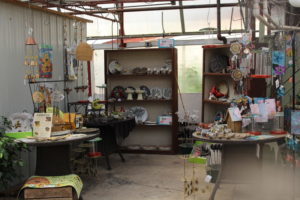

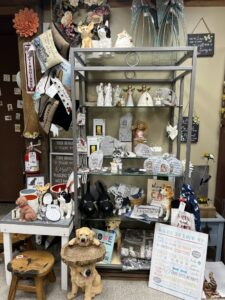
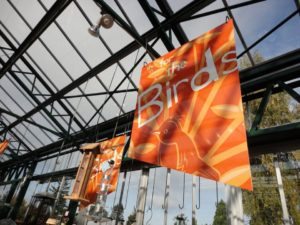
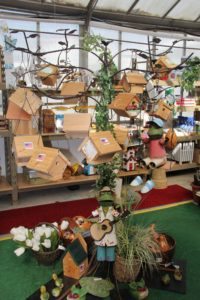

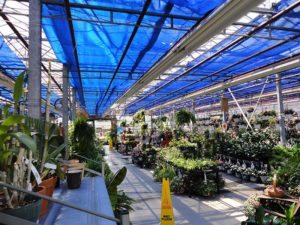
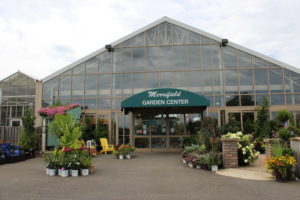

 Videos
Videos





